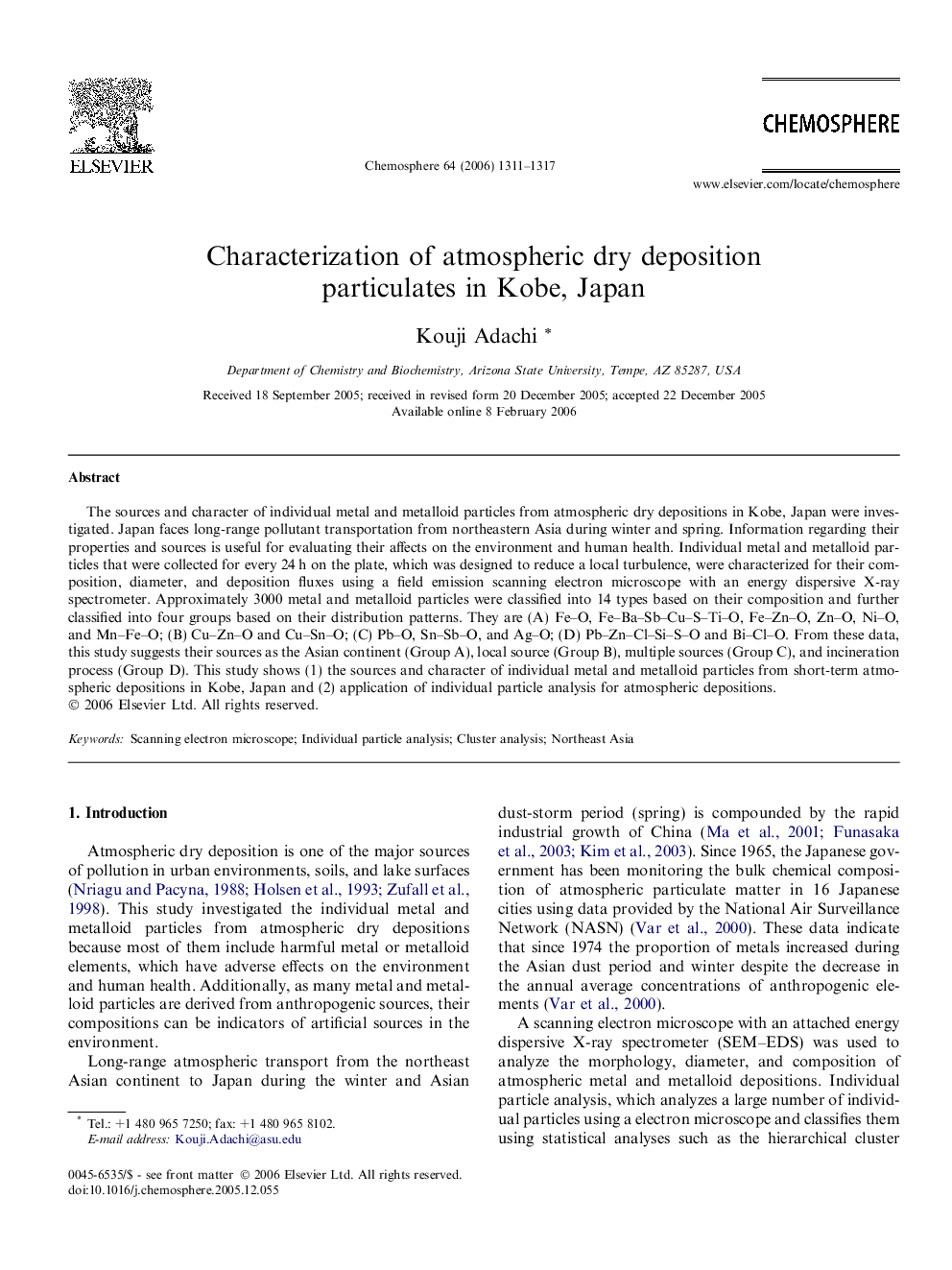| Article ID | Journal | Published Year | Pages | File Type |
|---|---|---|---|---|
| 4416089 | Chemosphere | 2006 | 7 Pages |
The sources and character of individual metal and metalloid particles from atmospheric dry depositions in Kobe, Japan were investigated. Japan faces long-range pollutant transportation from northeastern Asia during winter and spring. Information regarding their properties and sources is useful for evaluating their affects on the environment and human health. Individual metal and metalloid particles that were collected for every 24 h on the plate, which was designed to reduce a local turbulence, were characterized for their composition, diameter, and deposition fluxes using a field emission scanning electron microscope with an energy dispersive X-ray spectrometer. Approximately 3000 metal and metalloid particles were classified into 14 types based on their composition and further classified into four groups based on their distribution patterns. They are (A) Fe–O, Fe–Ba–Sb–Cu–S–Ti–O, Fe–Zn–O, Zn–O, Ni–O, and Mn–Fe–O; (B) Cu–Zn–O and Cu–Sn–O; (C) Pb–O, Sn–Sb–O, and Ag–O; (D) Pb–Zn–Cl–Si–S–O and Bi–Cl–O. From these data, this study suggests their sources as the Asian continent (Group A), local source (Group B), multiple sources (Group C), and incineration process (Group D). This study shows (1) the sources and character of individual metal and metalloid particles from short-term atmospheric depositions in Kobe, Japan and (2) application of individual particle analysis for atmospheric depositions.
